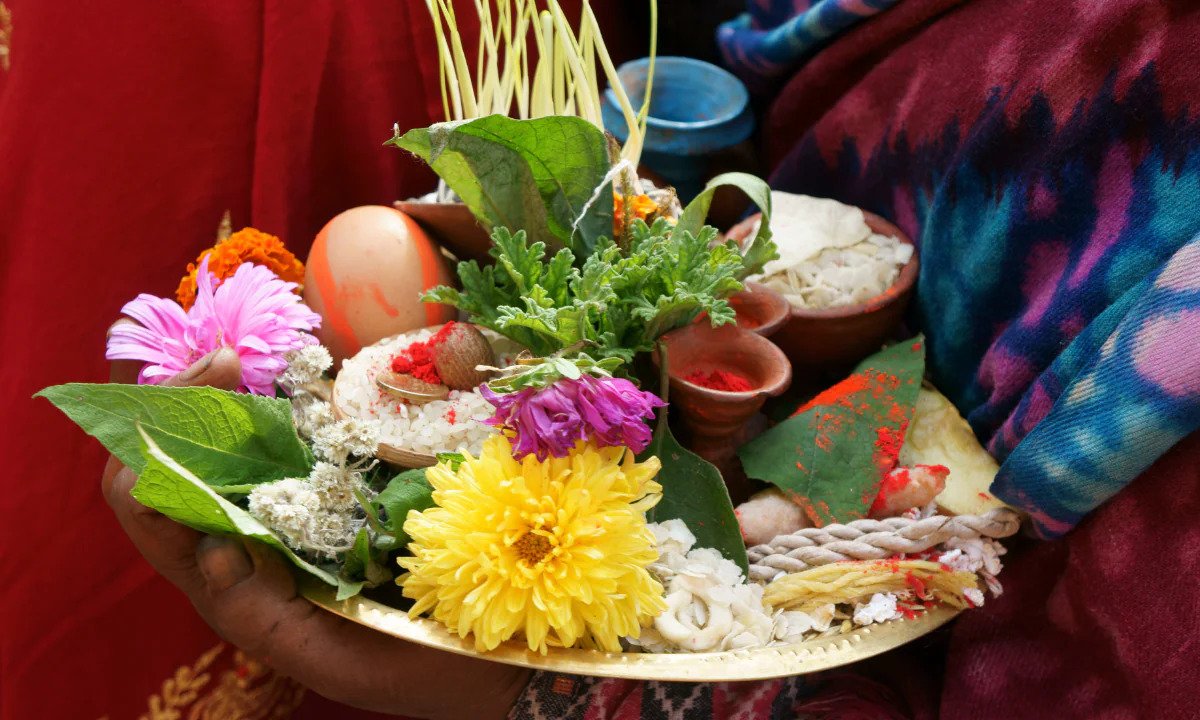
Fulpati Is in 7th Day of Dashain . This date also has special significance. On the seventh day, flowers are brought in as a form of worship for decades. There are some statements about the prevalence and importance of flowers. Even though Dashain starts from the day of Ghatsthapana, the activity of Dashain starts from today, i.e.Fulpati
After bringing flowers in every house, the dawn of the decade begins. According to the classical method, flowers are brought in as a symbol of good fortune.It is customary to worship nine types of leaves like banana, pomegranate, paddy, haldi, mane, karchura, vine, ashoka and jayanti and bring them to the place of Durga Puja at the rate of each bunch .Fulpati
In these nine leaves, Brahmani, Rakchachandika, Lakshmi, Durga, Chamunda, Kalika, Shiva, Shokaharini and Karthiki Devi are worshiped one by one with sixteen ingredients.
On this day, flowers are brought from Dashainghar of Gorkha Durbar and brought to Hanumandhoka. It is customary to bring six people of Magar caste from Gorkha to Jeevanpur of Dhading district including the priests of Dashaingharas. After that, there is a tradition of bringing six Brahmins from Jeevanpur of Dhading district to Jamal of Kathmandu.Fulpati
From Jamal to Hanuman Dhoka, high-ranking civil servants, Gurju’s platoon, band baja, panche baja, decorated kalsyundi and cultural dance songs are brought along with long line .
It is said that after the unification of Nepal as a fragmented state, the flowers picked from Gorkha were taken to various Shakti Peeths of the country. It was customary to bring flowers from Gorkha to Dashainghar in the temple of Taleju Bhavani in Hanumandhoka, Kathmandu, through Jeevanpur in Dhading district.
Phool is Flower and pati is leaves and plants. FulPati literally means flowers, leaves and plants.
There is a tradition in Nepal of bringing nine types of Phoolpati into the pooja room of the house with a celebration in the seventh day of Navaratri Pooja. Therefore, the seventh day of Vijaya Dashami is also called Phoolpati in Nepa
Why to bring fulpati to your home (What is significance of Navapatrika)
Bringing Phulpati brings all the nine goddess to your home. All nine plants represent goddess and all goddess represents Health, Wealth and prosperity. Entering Phulpati home is entering health, wealth and prosperity home.
Nepali Tradition of Fulpati before the fall of Royal Regime
Navapatriva for phulpati are carried by the helpers from the royal Dashain Ghar of Gorkha via the ancient route to Jeevanpur in Dhading district. The person carrying the phulpati swims through Budhi Gandaki River instead of walking on the bridge above it or taking a boat. It is a tradition.
A group of assistant priests from the royal Dashain Ghar of Basantapur place of Kathmandu would be waiting for this person in Dhading to carry the phulpate to Kathmandu. They bring it to Jamal and from there the phulpati receives royal treatment. It is placed in a palanquin under a gold-tipped ornate umbrella. Here, the phulpati is welcomed by the Royal Nepalese Army, Nepal police and government dignitaries. An army platoon of the royal priest leads the phulpati parade to Hanumandhoka Palace.
There are Fulpati gun fires performed by Nepali army, this is the indication to the people, that the fulpati has been entered successfully.
The Navapatrika is brought from old kingdom of Shah Dynasty, the Gorkha Durbar to Kathmandu, the capital of unified Nepal. Prithivi Narayan Shah was king of gorkha, who unified Nepal.
Bringing fulpati from Gorkha to Kathmandu signified that Kathmandu is blessed with the same blessing of Durga Bhawani equal to Gorkha.
FACEBOOK COMMENTS